Serenade of the Seas
Alaska Cruise, May-June 2004
Use the navigation bar to go directly to the port of call, then click on a photograph
to enlarge...
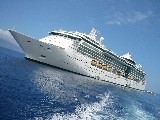 |
Click on the image to
reveal further photographs of the Radiance class ships and cruise guests
Maiden Voyage: 01 August 2003
Passenger Capacity: 2,501
Gross Tonnage: 90,090
Length: 962'
Beam: 105.6'
Draft: 26.7'
Cruising Speed: 25 knots
Further detail can be obtained from: Royal
Caribbean International & Meyer Werft
Shipyard
|
Most of Canada's
imports from and exports to the Orient & Australia pass through Vancouver,
Canada's gateway to the Pacific. This cosmopolitan city has many attractions
for visitors: Robson Street shops, historic Gastown and Stanley park, situated 5
minutes from the heart of Vancouver, this 1,000 acre green space includes a 6
mile seawall, beaches, aquarium, zoo, freshwater lakes, gardens and examples of
native art.
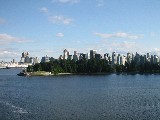 |
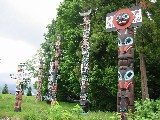 |
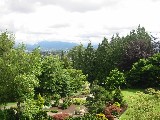 |
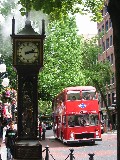 |
|
Brockton Point, Stanley Park with Vancouver in the
background |
The North Coast Totem Poles in Stanley Park |
View of Grouse Mountain from Queen
Elizabeth Park |
The Gastown Steam Clock |
The longest river of ice
in North America, the Hubbard Glacier, 1,350 square miles of translucent blue
ice, is one of the most active glaciers of its kind in Alaska.
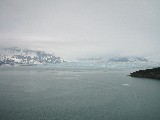 |
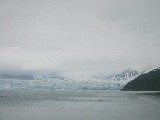 |
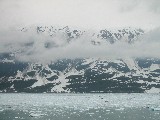 |
|
The Hubbard Glacier, at the head of
Disenchantment Bay is the longest tidewater glacier in North America.
It is 76 miles long, and it's ice-cliff face is 6 miles wide. |
Disenchantment Bay |
|
|
|
|
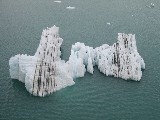 |
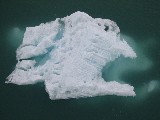 |
|
|
Icebergs in Disenchantment Bay |
|
Skagway, Garden City of Alaska, got its
name from the Tlingit (Indian) names 'Skagua' which means 'the place where the
north wind blows'. Situated at the head of the Lynn Canal, Skagway is home
to 850 year-round residents. When gold was discovered in 1897, this is
where an army of hopeful gold seekers began the 45 mile trek over White Pass
towards the Klondike goldfields.
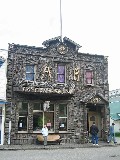 |
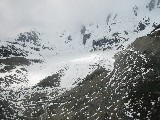 |
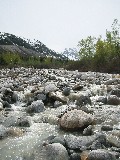 |
|
The driftwood facade of
the Skagway Visitor Centre, previously The Artic Brotherhood Hall. Built in
1899 |
The aerial
view of Laughton Glacier, our hike
destination |
Laughton
Glacier, our hike destination |
|
|
|
|
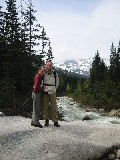 |
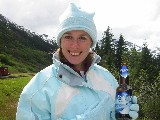 |
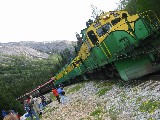 |
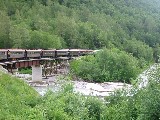 |
|
Zoë & Mike at the remote Upper
Skagway river during the heli-hike in the Tongass National Forest. |
Waiting at Glacier Station for the White
Pass Train to arrive |
The White
Pass Railway . Born in the Klondike Gold rush of 1898, the White
Pass & Yukon route climbs from sea level to almost 3,000ft in 20 miles.
The train carriages are named after American lakes and are on average 50
years old. |
Juneau, the capital of Alaska, was founded
during a gold rush in 1880. Today, the former gold-mining town is home to some
of Alaska's most spectacular scenery.
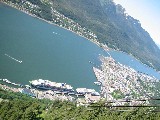 |
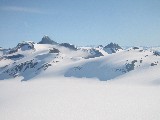 |
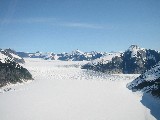 |
|
Juneau & the Gastineau Channel |
The Juneau Icefields |
Taku Glacier |
|
|
|
|
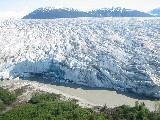 |
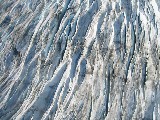 |
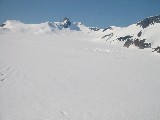 |
|
The Taku Glacier |
The Glacier's Surface |
The Dog Camp (seen below the
bright white markings on the right hand side of the picture) |
|
|
|
|
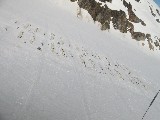 |
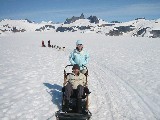 |
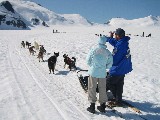 |
|
The Kennels, which form part of the Camp |
Mike & Zoë on a Dog Sled |
Dave Dalton, a regular
participant in the Yukon Quest, introduces his 8 Dogs: Jack,
Bobby, York, Rainee, Rachel, Amy, Gordon & Adam |
|
|
|
|
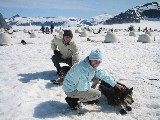 |
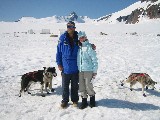 |
|
|
Mike, Bobby, Zoë & Jack back at camp |
Back at camp; Adam, Gordon, Dave, Zoë &
Amy |
|
Ketchikan originated as an Indian fish
saltery, but the town's major growth began when it became a supply base and
entry port for miners during the 1898 Gold Rush to the Klondike.
Set aside as a national monument in 1978,
Misty Fjords is an example of the Alaskan wilderness complete with towering
trees, deep bays, sheer granite cliffs, plunging 1,000-foot waterfalls,
crystalline lakes and low-hanging mists.
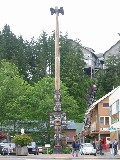 |
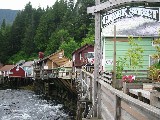 |
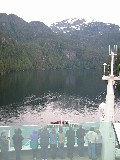 |
|
Chief Johnson Totem Pole,
Ketchikan |
Creek Street, former red light district &
now tourist attraction |
Cruising the Misty Fjords onboard the
Serenade of the Seas |
|
|
|
|
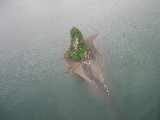 |
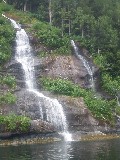 |
|
|
An aerial view of New Eddystone Rock.
A
volcanic plug which is situated in the Behm Canal & reaches 234ft |
A waterfall in Rudyerd Bay, as viewed
from a seaplane |
|
The Inside Passage is a natural protected
waterway of approx. 950 miles (1,530km) situated in north-western North America. It extends
along the coast from Seattle, Washington, to Skagway, Alaska, and is an
important year-round shipping lane for both commerce and tourism. The passage is
made up of a series of straits which are sheltered from Pacific Ocean storms by
a number of islands, including Vancouver Island. It is famous for sightings of dolphins and Killer
Whales.
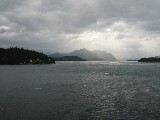 |
|
|
|
Cruising the Inside Passage |
|
|
á
Return to top of Page

































